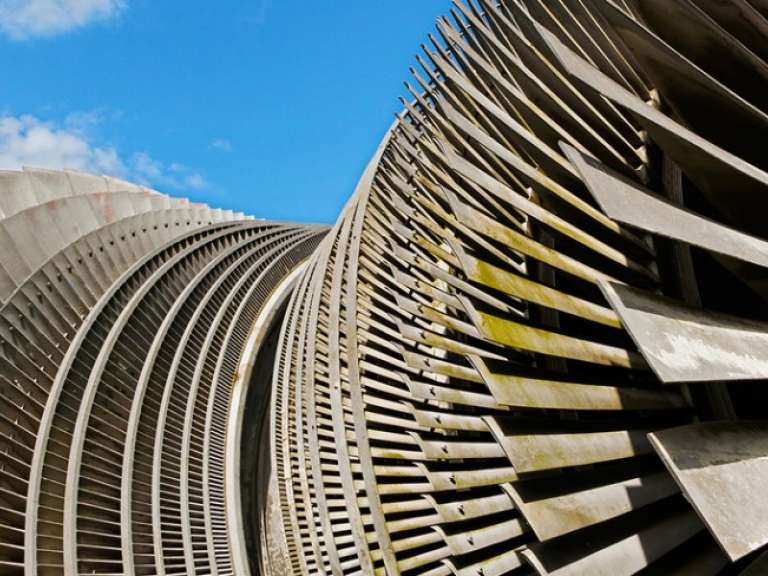Equipment Upgrade or Repair? Resources to Help Plant Managers Decide
Lawrence WilleyEven the most experienced plant managers sometimes grapple with whether equipment upgrade or repair is in order. Here are some key factors they consider.

Deciding whether to upgrade or repair power generation equipment is an ongoing process for even the most experienced plant managers. Generally, the guideline is to repair new equipment and upgrade older equipment, however, the decision often isn't that simple. Repairs tend to be the cheaper option in the short term, but replacement or upgrades may be warranted for safety issues or when economic factors demand it.
How do plant managers decide whether equipment upgrade or repair is in order? This decision involves an accurate and complete cost–benefit analysis of several factors.
The first consideration is safety. Equipment upgrade or repair decisions are made easy if safety is improved for personnel or property. All materials and systems break down over time. Keep a detailed record of every component of your plant, and consider how age plays into the efficiency and safety of the equipment in question.
It is often difficult to discern the current condition of equipment without costly inspections. However, by recording the status of each part and changes in the environment during operation and at service intervals, a plant manager can improve visibility into equipment condition.
Considering past maintenance, as well as operations, helps plant managers understand trends and inform future decisions.
Plant managers need to balance the short-term cost-benefit of a repair against the long-term cost and revenue benefit of an upgrade. Depending on each plant's economics, an upgrade may easily pay for itself within three years and continue keeping the plant competitive in the future. However, when planning for an upgrade, it is important to consider factors beyond part costs.
The level of skilled labor required for repair or replacement may differ. Take into account the cost of not only hardware changes, but also all activities that follow, such as the time it takes to optimize software or controls. Consider not only lost revenue, but also other opportunities throughout the plant or your larger portfolio and account for the maximum impact of an upgrade or repair.
Savvy plant managers gather input from multiple sources, employ preventive maintenance, and keep detailed records of everything. The decision to upgrade or repair equipment must be data driven and should include input from the OEM as well as other industry experts. Make sure to watch for changing boundary conditions—assumptions of the past may not hold true for the future.
Managers should also use a levelized cost basis when comparing alternative approaches. This means that all future time and costs are accounted for and distributed accordingly. Considerations such as LCCA (Life Cycle Cost Analysis) and EUAC (Equivalent Uniform Annual Costs) support this approach. However, the data available is sometimes incomplete, and plant managers don't always have the time it takes to make such a detailed assessment. In these situations, plant managers can use the following guideline: If greater than three-quarters of the equipment's life has been consumed, and repairs are greater than one-third of the replacement costs, then it may be time to upgrade.
An upgrade may also be the superior choice if:
Safety to personnel is improved, or risk of future damage diminished.
Performance has deteriorated to the point of significant lost production.
The state-of-the-art version of the equipment has progressed to the point that the original machine is no longer competitive.
Conversely, it may be more appropriate to repair equipment when:
There are clear priority conflicts (e.g., budget) with other plant equipment.
Significant spares and tooling, along with the trained personnel, are already on hand to get the job done.
Getting back online is more important than anything else.
Deciding whether to repair or replace equipment is rarely easy. Consider the following scenarios:
1. A steam turbine undergoing scheduled maintenance is found to have some damage to rotor shaft seal packings. The OEM indicates that new, more advanced parts are available. With detailed past performance and maintenance records to refer to, the plant manager determines that the upgraded parts don't require modification to the shaft and don't take more time to install. They do require a little more time to break in, which imposes operational limits on the plant for a few extra days. However, the upgraded parts also reduce the amount of steam lost through the shaft seals. For the right price and terms, this is an example where an upgrade can be the overwhelming best choice.
2. A gas turbine is approaching second major interval, and the plant manager is considering how to manage rotor life. One option is to refurbish the existing rotor or to exchange it for a refurbished rotor. An alternate option may be to upgrade the entire machine into a different configuration that provides more output (revenue opportunity), lower heat rate (cost savings), and maintenance improvements. The manager realizes the value that the upgrade can add and weighs it against the cost of doing the upgrade (including factors such as emissions permits). For the right price and terms, an upgrade may be the best choice for the plant.
Overall considerations include improving efficiency, increasing output, and lowering ongoing costs. Among these factors, there is a common thread that greatly aids the upgrade or repair decision: impeccable record keeping. Ultimately, the decision a plant manager makes will be vital to the operation and profitability of their plant.
Virtual reality may be more closely associated with gaming than big business, but for the power sector VR can yield substantial benefits. It's when 3D becomes 4D that things get really interesting.
Your OEM is key to ensuring you optimize the performance of your equipment. Here are the questions you should ask after the sale.
Eradicating hazards completely is impossible, but new power plant safety innovations can mitigate risk.